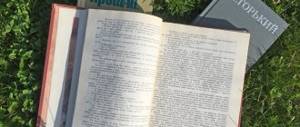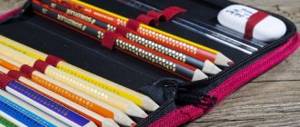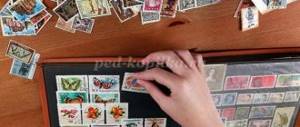The state of Phenicia in ancient times was located along the Mediterranean Sea. It became famous for its achievements in the field of navigation. In our article we suggest that you familiarize yourself with this topic from a history course for grade 5.
The material was prepared jointly with a teacher of the highest category
Alexandrova Ekaterina Valerievna.
Experience as a history and social studies teacher - 11 years.
Shipbuilding
The location of Phenicia was not suitable for agriculture, but contributed to the development of other areas. One of these, which brought the Phoenicians world fame, is shipbuilding. Without it, navigation would be impossible.
The main material for the construction of ships was Lebanese cedar, which grew in Phenicia. The wood was of excellent quality, which made the ships very durable and resistant to strong storms. In addition, the Phoenicians were the first of the ancient peoples to apply new principles in shipbuilding:
- the body was made up of thick boards, the edges of which were fastened with large oak tenons;
- the transverse ribs of the hull began to be covered with sheathing;
- great attention was paid to the quality of the keel (the ships were not flat-bottomed);
- the cargo compartments were fenced off.
From the 12th century BC. e. The Phoenicians created capacious trading ships with good carrying capacity. Fencing bars were attached to the sides to protect the cargo, and two large oars for maneuvers were attached to the stern. A straight sail (usually purple in color) was attached to a mast equipped with yards. The oarsmen were often slaves.
The Phoenicians built strong ship shelters off their coasts to protect ships during storms.
Rice. 1. Phoenician trading ship.
The Phoenicians are considered the creators of the trireme. This is a military (combat) ship with three rows of oars, common in the Mediterranean since the 8th century BC. e. The oars were placed in a checkerboard pattern, with rows on top of each other. The ships could reach 40 meters in length and were equipped with an iron ram (less often a wooden one).
TOP 2 articles that are read along with this
- 1. Ancient Phenicia
- 2. Great travelers and their geographical discoveries
The Phoenician fleet was actively used by the Egyptian rulers in their conquests, since triremes were very maneuverable.
Rice. 2. Phoenician trireme.
Methodological work of the teacher
Class : 5 Subject : History of the Ancient World Topic : “Western Asia in the Iron Age” Author of the textbook and teaching materials : Mikhailovsky F.A. Lesson topic : “Phoenician sailors” Lesson type : learning new material. Form of organization of student work : independent work. Technology : Personalized learning technology and ICT. Purpose : to show the contribution of the Phoenicians to world culture. Lesson objectives : Educational : 1) find out the features of the location and natural conditions of the country; determine the main occupations of the inhabitants of the country and the achievements of the Phoenicians. Developmental : 1) continue to develop the skills of independent work with a textbook, atlas and additional literature to study new material. Educating : 1) to form a moral condemnation of Phoenician piracy and slave trade; the ability to assess one's capabilities. Equipment : worksheet with teaching materials for each student, textbook, atlas, “Map of Success”. Lesson Project
Lesson progress I. Organizational moment. Goal setting
U.: Today we will take a fascinating journey into the past, to a country that is no longer on the map.
We will get acquainted with Phenicia and its people, whose discoveries and inventions the world still uses. The main question that we have to answer today is what allowed the Phoenicians to achieve outstanding success at sea? Why were they considered the best navigators of the ancient East? We will work using cards of three levels: A, B, C. The Success Map will help you record your achievements. At "3" you must complete four level "A" tasks. At “4” there are three tasks of level “B”. At "5" - one task of level "B". When completing tasks step by step, you each put a “+” next to your name (last name). Assess your capabilities and put in the worksheet the mark you want to earn in class today. At the end of the lesson we will compare and see if you were able to achieve your goal. I wish you success, let's get to work. II. Independent work with multi-level cards (Appendix 1). III. Consolidation U.: 1. Conversation on issues of independent work. Suggested student answers 1) Why were the Phoenicians considered the best sailors of the East? 2) What influenced the choice of occupations of the ancient Phoenicians? 3) Why was it difficult for the inhabitants of Phenicia to engage in agriculture and cattle breeding? 4) What inventions of the ancient Phoenicians do we still use today? U.: Conclusions : Our journey to Ancient Phenicia has come to an end. Despite the fact that this country has not been on the map for a long time (the territory of modern Syria, Israel and Lebanon), the memory of it is still alive. Many peoples of the world are grateful to the Phoenicians for their priceless gift: almost all alphabets existing today are of Phoenician origin. Phenicia was a coastal country. Phenicia was separated from the interior of the mainland by high, impassable mountains, so the Phoenicians turned to the sea. Thus, natural conditions plus the intersection of sea trade routes determined the main occupations of the ancient Phoenicians. The population of the country managed to build a powerful civilization, the basis of which was maritime trade and craft. They became famous as brave sailors and enterprising traders. And this required the emergence of more advanced ships. It is also known that the very first long-distance journeys were made by the Phoenicians. They were rightfully considered the best navigators of the ancient East. 2. Final control (computer test on the topic “Phoenician sailors”, Appendix 2). IV. Reflection U.: Based on the acquired knowledge, compose a five-line ): the first line is a noun, ___________________________________________ the second is two adjectives, _________________________________________________ the third is three verbs, _________________________________________________ the fourth is a semantic phrase, _________________________________________________ the fifth is a semantic noun ___________________________________________ U. .: We figured it out... Tell me, have you achieved the goal that you set for yourself at the beginning of the lesson?
Did everything work out for you? What were the difficulties? What conclusion did everyone draw from the lesson? Let's analyze the “Map of Success”. (In the class... there is a person. Of these, level B was reached by... person, level B - by..., level A - by... person). We see that there is still something to strive for: read the text more carefully, ... V. Individual homework Compose a guide to Phenicia (on behalf of the Phoenician merchant).
Annex 1
Worksheet on the topic "Phoenician seafarers"
Level A “3” 1. Phoenician cities 1. Read (§15 paragraph 1 pp. 81-82; atlas: p. 11). 2. Answer what the words mean and what connection exists between them “Wealth, narrow strip, Byblos, Sidon, Tire, trade caravans”? 2. Merchants and pirates 1. Read (§15 paragraph 2 pp. 82-83; atlas: p. 11). 2. Write down what the Phoenician merchants sold? 1. Fabrics dyed with _______________ paint.
2. Vessels and beads made from __________________. 3. Logs from Lebanese _______________. 4. “Living goods” - ___________________. 5. Olive ___________________________. 6. Grape ______________________. 3. Confirm with examples that it was not for nothing that the ancient Phoenicians had a bad reputation. It is known that they fought almost no wars. Where then did they get slaves? (pp. 82-83) What is your assessment of the Phoenicians' piracy and slave trade? 3. Phoenician colonies 1. Read (§15 paragraph 3 p. 83; atlas p. 11). 2. Complete the tasks on the contour map, atlas: page 11.
1. Phoenician cities are indicated on the map with numbers. Write their names.
1. _________________ 2. _________________ 3. _________________ 2. Write the name of the sea along which the Phoenicians laid trade routes. 3. Color in the shores that were captured and colonized by the Phoenicians. 4. Find and write the name of the Phoenician colony, which later became the main city of a large state. 5. The ocean on which the Phoenician ships sailed is indicated on the map with a number. Write its name: _______________________________. 3. Describe the geographical location of Phenicia by filling in the blanks in the sentences: “Phenicia was located on the ____________ shore of the ____________ sea. The Phoenicians founded their settlements on the shores of the _____________ sea, which were called ____________. The largest Phoenician colony was the city of _________________. The Phoenicians were excellent ___________________, but had a bad reputation for kidnapping _______________.” 4. Travels of the Phoenicians 1. Read (§15, paragraph 4, pp. 83-84; atlas: p. 11). 2. Name the god who was universally revered in Phenicia and beyond, the supreme god of the city of Tyre, the patron of navigation and the “leader” of the Phoenician colonization __________________. 3. It is known that around 600 BC. e. The Egyptian pharaoh Necho, having decided to find out whether all of Africa is washed by the sea, gave instructions to the sailors. Count how many years have passed from the voyage of (whom, write) ______________ around Africa to the present day: 5. Phoenician alphabet 1. Read (§15, paragraph 5, pp. 84-85). 2. Fill in the missing words: “The ancient alphabet was created in ___________________. It consisted of ___ letters. There were only _____________ sounds in the _______________ alphabet.” 6. Unravel the confusion. Rearrange the letters in the words and you get: 1) Phoenician occupation “ODSMOREKHTV” ____________________. 2) Sea robbery “TSTPIRAVO” _____________. 3) A settlement founded far from the homeland “LONKOIA” _________________. 4) Writing invented by the Phoenicians “VITALPHA” _________________. Level B “4” 1. You are sailing in the Mediterranean Sea, you are running out of water, food is running out.
What are you going to do? ______________________________________________________________ 2. What did the Phoenician merchants buy (atlas: p. 11)? 1) In Egypt ___________, ____________, _______________, ________________________________________________. 2) In Babylon ___________, ____________, _______________, ________________________________________________. 3) In Greece ___________, ____________, _______________. 4) In Britain and Northern Europe ___________, ____________, _______________, ____________________________________________. 5) In India ____________, _______________________________________. 3. “More than three thousand years ago in Egypt and Mesopotamia, students of scribal schools spent many, many years mastering writing and reading. On the contrary, in the ancient cities of Tire, Byblos and Sidon, schoolchildren, as soon as they began to study - just a few weeks passed - could write down and read a simple text.” 1). How can we explain the difference in the timing of learning to read and write in different ancient countries? 2). Name the pros and cons of the Phoenician alphabet. 4. Eliminate the unnecessary concept. Explain why? 1) alphabet, papyrus, glass, purple; 2) craft, piracy, beekeeping, navigation, trade. 5. Match Match Match Letters and Numbers
| 1 | Piracy | A | settlement founded far from home |
| 2 | The colony | B | fabric dye extracted from sea shells |
| 3 | Purple | IN | sea robbery |
| 4 | Glass | G | important invention of the Phoenicians |
| 1 | 2 | 3 | 4 |
Level B “5” 1. What does the high level of development of artistic crafts among the Phoenicians indicate? Why did these particular crafts develop? 2. How did the Phoenicians manage to develop an active trade unprecedented at that time on the eastern and southern coasts of the Mediterranean Sea?
Appendix 2
Computer test : final control on the topic “Phoenician sailors”
1. Which of the proposed judgments is correct? 1) Phenicia was located on the northern coast of the Mediterranean Sea; 2) Phenicia was located on the eastern coast of the Mediterranean Sea; 3) Phenicia was located on the western coast of the Mediterranean Sea.
2. Phoenician merchants brought to different countries of the world: 1) wood, purple fabrics, glass, slaves, olive oil, wine; 2) grain, dates, skins, pottery; 3) grains, sweets, fruits, papyrus, silver.
3. The Phoenicians founded their colonies - settlements for: 1) conducting military operations with the local population; 2) reviving trade with other countries and preparing for new, more distant travels; 3) spreading their way of life among the local population.
4. Around 600 BC e. The Egyptian pharaoh Necho, having decided to find out whether all of Africa is washed by the sea, gave instructions to the sailors. Mark who? 1) Egyptians; 2) Phoenicians; 3) Babylonians.
5. The writing system used by the inhabitants of Phenicia is called: 1) cuneiform; 2) hieroglyphic writing; 3) alphabet.
6. In the Phoenician alphabet there was...
1) 33 letters; 2) 22 letters; 3) 750 hieroglyphs.
7. The talented people from the “Purple Country” could not create: 1) sea ships; 2) transparent glass; 3) first alphabet; 4) red-purple paint; 5) pillars of Melqart.
8. Indicate which country’s history the following fragment refers to: “Traders arrived in the city. On the sixth day, the daughter of the king of Argos, Io, came ashore. Women bought goods... Traders captured Io and sailed to Egypt...": 1) Phenicia; 2) Palestine; 3) Egypt.
9. This discovery of the Phoenicians is spoken of as one of the largest events in human history. Having mixed sand with soda, the Phoenicians smelted it like copper ore, and then from this mass they obtained something that they kept secret from everyone. What did they get? Choose the correct answer. 1) paper; 2) concrete; 3) glass.
Keys to the test:
| Question no. | 1 | 2 | 3 | 4 | 5 | 6 | 7 | 8 | 9 |
| Answer no. | 2 | 1 | 2 | 2 | 3 | 2 | 5 | 1 | 3 |
Note: The “Success Card” can be placed with a general list of students on the chalkboard or separately for each student on a worksheet (possibly named “My Achievements”).
(The computer program was created in the SunRav TestOfficePro 5.0 Editor.) References 1. Goder G.I. Workbook on the History of the Ancient World. 5th grade – M.: “Enlightenment”, 2004 2. Makarov Yu.A. Individualized learning technology. – Perm, 2003 3. Martyanova O.A. Repetition and control of knowledge in history. 5th grade ed. “Panorama”, 2009 4. Mikhailovsky F.A. General history. Ancient world history. 5th grade - M.: “Russian Word”, 2007 5. Nemirovsky A.I. A book to read on the history of the Ancient World. M., 1986.
Additional material
Skilled sailors of antiquity
Undoubtedly, the most skillful navigators of antiquity were the Phoenicians, who lived in the Mediterranean at the foot of the mountains of Lebanon. It was to them that maritime dominance passed when in the 10th century. BC e. the power of the Egyptian fleet began to decline. The Phoenicians, seeking to expand their trade relations, sailed along the Tigris, Euphrates, Nile, Persian Gulf, Mediterranean and Red Seas, everywhere founding numerous colonies and settlements, of which Carthage achieved the greatest greatness.
Phoenician merchants were known far beyond the Strait of Gibraltar, including in the Cassiterides (now the British Isles). There are even suggestions that in the 7th-6th centuries. BC e. Phoenician sailors managed to circumnavigate the African continent. Historians believe that such an unprecedented expedition at that time was organized on behalf of Pharaoh Necho, which means that the Egyptians themselves were not ashamed to officially recognize the skill of the Phoenicians and their primacy at sea. The helmsmen of Phoenician ships could accurately guide them day and night, guided by the Sun, stars, the color of the water, the shape and nature of the shores. The richest ship forests that grew on the territory of Lebanon made the Phoenicians not only glorious sailors, but also aces of ancient shipbuilding. Images of Phenician ships have come to us from Assyrian bas-reliefs of the 7th century. BC e. and an even earlier fresco on the tomb of an Egyptian dignitary. The ships had a keel, a high bow and sheathing along the frames. A small Phoenician merchant ship, more than 30 m long and 10 m wide, was equipped with one row of rowing oars and a single rudder oar. A rectangular sail was stretched on a horizontal yard. At the top of the mast there was a platform that resembled a shoulder basket, which served as a post for an observer (the so-called “crow’s nest”). The stem was decorated with carvings - the head of a horse or donkey. From the frescoes and descriptions that have come down to us, we can judge the color of the ship. The hull of the ship was dark brown, the deck was brown but of a lighter tone, and the sail, sternpost and crow's nest were red.
The famous bas-reliefs from Nineveh and Khorsabad depict Phoenician warships that had two tiers of oars, which were located one above the other. But the most powerful military flotilla belonged to Carthage. It consisted mainly of large ships - kinkerem, under the protection of which Carthaginian ships, sailing in the Mediterranean Sea and often going out to the ocean, could feel quite calm, without fear of an unforeseen attack by pirates.
Phoenician ships VIII - VI centuries. BC e: trade (top) and military (bottom) The author's development of the lesson was tested in the classes of history teacher Zinaida Pavlovna Rukaber. The author of the technology of individualized training, Yu.A. Makarov, attended Zinaida Pavlovna’s lessons more than once and described her work using this method as highly effective and efficient.
Achievements of seafarers
Initially, the Phoenicians used ships for fishing. Later, the main goal of navigation became the development of trade: it was necessary to sell one’s goods and acquire others as cheaply as possible for one’s own use and for sale. Phoenician products made of metal, ebony, ivory and valuable fabrics, especially purple (such paint in Phenicia was made from shellfish), were very popular.
The state had free access to the Mediterranean Sea, and high-quality ships made it possible to explore the Atlantic Ocean. Therefore, Phoenician sailors had the opportunity to explore different directions. They sailed the entire Mediterranean Sea, on the islands of which they founded their colonies (Sicily, Malta, Sardinia, Cyprus, Crete); reached the Atlantic coast of England, Spain and the Canary Islands.
Hanno is considered the most famous navigator. He led an expedition on a trireme to the shores of Africa. At the request of the Egyptian ruler Necho ΙΙ in the 6th century BC. e. The Phoenicians went out into the Red Sea, then reached the Strait of Gibraltar and returned to Egypt, thus walking along the entire coast of Africa. This journey lasted about three years.
It was the Phoenicians who are considered the first navigators who managed to sail their ships around the African continent.
Rice. 3. Phoenician sailors.
Sea routes
The exploration, successful trade and travel of the Phoenician sailors allowed them to create many cities and establish buying and selling in North Africa, on the Atlantic coast and in almost all ports of the Mediterranean Sea. Carthage, one of the most famous cities of antiquity, was founded by this people. Thanks to its favorable geographical location, it flourished and served as protection for the Phoenician colonies.
Great navigators laid out dozens of routes and explored many seas and lands. At the same time, they were not helped by the compass needle and other cunning instruments - they were guided only by the sun and stars. It will be interesting to know what discoveries the Phoenician sailors made. They discovered:
- northern lands of Europe;
- Africa;
- Mediterranean Sea;
- Atlantic Ocean;
- Indian Ocean.
In the 7th century BC. e. The Phoenicians managed to circumnavigate Africa. They proved that the continent is surrounded on all sides by water, except at its junction with Asia. Before them, no one had sailed around Africa. The sailors found themselves in the other hemisphere of the Earth and discovered that the sun was on the other side. This gave them the idea that our planet might be round. At that time, many perceived this information with distrust.
The Phoenicians passed through the Strait of Gibraltar around 500 BC. e. They founded several colonies and later reached the Gulf of Guinea.
Despite the many discoveries of navigators, few went to new lands. The Phoenicians kept most of the routes secret in order to trade with the discovered cities without competition from neighboring peoples. This approach allowed them to inflate prices when selling goods to foreigners and sell curiosities from distant lands to their compatriots for fabulous sums. It turned out that until the 15th century, almost no one except the Phoenicians traded with African settlements.
Travel to India was rare in ancient times. No one knew the exact location of the lands; many believed that there was nothing there except an endless ocean.
The Phoenicians were the first to reach the lands of Great Britain. They brought amber and tin there.





